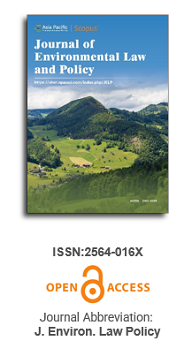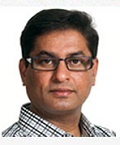
Asia Pacific Academy of Science Pte. Ltd. (APACSCI) specializes in international journal publishing. APACSCI adopts the open access publishing model and provides an important communication bridge for academic groups whose interest fields include engineering, technology, medicine, computer, mathematics, agriculture and forestry, and environment.
From rehabilitation to prevention: The evolving role of physical therapy in healthcare policy transformation and health equity—A systematic review based on South Korea’s development experience
Vol 5, Issue 2, 2025
Download PDF
Abstract
With the rise of the global concept of green healthcare, the role of physical therapy in transforming healthcare policies has been further extended to the fields of resource conservation and environmental sustainability. Using a systematic literature review methodology and taking South Korea as a representative case, it systematically analyzes how physical therapy, through non-pharmacological interventions, preventive services, and the application of digital technologies. It found that physical therapy can significantly reduce the consumption of medical resources, decrease the generation of medical waste, and improve service efficiency. It also explores the evolution of laws of physical therapy in terms of policy frameworks, educational approaches, and service delivery models. The research shows that South Korea has made physical therapy the core carrier of environmentally friendly medical interventions by integrating green technologies, optimizing service processes, and reconstructing the primary service network. Thus, it promotes the innovation of healthcare policies towards low-carbon and high-efficiency directions. Driven by the continuous evolution of healthcare policies, physical therapy has transformed from a tool for postoperative rehabilitation into the main body of data-based and legalized public health interventions, participating in health governance, and achieving quantifiable results, and cost-effectiveness in aspects such as accessibility, user awareness, fairness, and effectiveness. These reform practices provide a law-based governance paradigm for global health policy transformation, offering empirical references for countries to optimize healthcare governance frameworks through institutional innovation. Particularly in critical areas such as health equity, well-being in aging populations, and integrated community care, physical therapy demonstrates substantial structural institutional value. This paper recommends that, during healthcare policy transitions, countries should strengthen the institutional integration of physical therapy from multiple dimensions, including legal frameworks, financial support, and professional training, to enhance system resilience and promote comprehensive health and well-being.
Keywords
References
1. WHO. Healthy Hospitals, Healthy Planet, Healthy People. 2009. Available online: https://www.who.int/publications/m/item/healthy-hospitals-healthy-planet-healthy-people (accessed on 21 April 2025)
2. Hambleton IR, Caixeta R, Jeyaseelan SM, et al. The rising burden of non-communicable diseases in the Americas and the impact of population aging: a secondary analysis of available data. The Lancet Regional Health-Americas. 2023; 21: 100483. doi: 10.1016/j.lana.2023.100483
3. Fang EF, Xie C, Schenkel JA, et al. A research agenda for ageing in China in the 21st century (2nd edition): Focusing on basic and translational research, long-term care, policy and social networks. Ageing Research Reviews. 2020; 64: 101174. doi: 10.1016/j.arr.2020.101174
4. Koo JK, Jeong SI. Sustainability and shared smart and mutual—green growth (SSaM-GG) in Korean medical waste management. Waste Management & Research: The Journal for a Sustainable Circular Economy. 2015; 33(5): 410-418. doi: 10.1177/0734242x15574561
5. Sherman JD, Thiel C, MacNeill A, et al. The Green Print: Advancement of Environmental Sustainability in Healthcare. Resources, Conservation and Recycling. 2020; 161: 104882. doi: 10.1016/j.resconrec.2020.104882
6. Svensson P, Jacobsson M, Palstam A, et al. Applying a sustainability perspective in the literature on physical therapy in relation to pharmaceuticals: a scoping review. Frontiers in Public Health. 2025; 12. doi: 10.3389/fpubh.2024.1509677
7. Bateni H, Carruthers J, Mohan R, et al. Use of Virtual Reality in Physical Therapy as an Intervention and Diagnostic Tool. Rehabilitation Research and Practice. 2024; 2024: 1-9. doi: 10.1155/2024/1122286
8. Green LA, Fryer GE, Yawn BP, et al. The Ecology of Medical Care Revisited. New England Journal of Medicine. 2001; 344(26): 2021-2025. doi: 10.1056/nejm200106283442611
9. Leppo K, Ollila E, Peña S, et al. Health in all policies: Seizing opportunities, implementing policies. Ministry of Social Affairs and Health; 2013.
10. Huber G. Impetus for Future Physical Activity Promotion and Therapy. B&G Bewegungstherapie und Gesundheitssport. 2022; 38(06): 247-253. doi: 10.1055/a-1952-8114
11. Streber R, Peters S, Köppel M, et al. From gaining knowledge to quality-assured, physical-activity-related care: the role of the German Association for health-enhancing physical activity and exercise therapy (DVGS). B&G Bewegungstherapie und Gesundheitssport. 2025; 41(02): 83-92. doi: 10.1055/a-2535-5381
12. Neiertz C, Wouters EJM, Mannheim I. The Association of Technology-Based Ageism with Using Digital Technology in Physical Therapy for Older Persons. Healthcare. 2023; 11(19): 2672. doi: 10.3390/healthcare11192672
13. Bürge E, Monnin D, Berchtold A, et al. Cost-Effectiveness of Physical Therapy Only and of Usual Care for Various Health Conditions: Systematic Review. Physical Therapy. 2016; 96(6): 774-786. doi: 10.2522/ptj.20140333
14. Hon S, Ritter R, Allen DD. Cost-Effectiveness and Outcomes of Direct Access to Physical Therapy for Musculoskeletal Disorders Compared to Physician-First Access in the United States: Systematic Review and Meta-Analysis. Physical Therapy. 2020; 101(1). doi: 10.1093/ptj/pzaa201
15. World Health Organization. Rehabilitation in health systems. World Health Organization; 2017.
16. Chen X, Giles J, Yao Y, et al. The path to healthy ageing in China: a Peking University-Lancet Commission. Lancet. 2022; 400(10367): 1967-2006. doi: 10.1016/S0140-6736(22)01546-X
17. Peterson LE, Goodman C, Karnes EK, et al. Assessment of the Quality of Cost Analysis Literature in Physical Therapy. Physical Therapy. 2009; 89(8): 733-755. doi: 10.2522/ptj.20080326
18. Peiris CL, Shields N, Brusco NK, et al. Additional Physical Therapy Services Reduce Length of Stay and Improve Health Outcomes in People with Acute and Subacute Conditions: An Updated Systematic Review and Meta-Analysis. Archives of Physical Medicine and Rehabilitation. 2018; 99(11): 2299-2312. doi: 10.1016/j.apmr.2018.03.005
19. Peiris CL, Taylor NF, Shields N. Extra Physical Therapy Reduces Patient Length of Stay and Improves Functional Outcomes and Quality of Life in People with Acute or Subacute Conditions: A Systematic Review. Archives of Physical Medicine and Rehabilitation. 2011; 92(9): 1490-1500. doi: 10.1016/j.apmr.2011.04.005
20. Korean Physical Therapy Association. Task analysis report of physical therapists. KPTA; 2023.
21. Kim CN, Yoon SJ. Reinforcing Primary Care in Korea: Policy Implications, Data Sources, and Research Methods. Journal of Korean Medical Science. 2025; 40(8). doi: 10.3346/jkms.2025.40.e109
22. Kim K, Kim J, Lee H. A study on the development of standard curriculum for physical therapy in Korea. The Journal of Korean Physical Therapy. 2006.
23. Valdés-Badilla PA, Gutiérrez-García C, Pérez-Gutiérrez M, et al. Effects of Physical Activity Governmental Programs on Health Status in Independent Older Adults: A Systematic Review. Journal of Aging and Physical Activity. 2019; 27(2): 265-275. doi: 10.1123/japa.2017-0396
24. Korea Statistical Information Service (Kosis). Population Projections for Korea: 2020-2067. Statistics Korea; 2021.
25. Kim KW, Kim OS. Super Aging in South Korea Unstoppable but Mitigatable: A Sub-National Scale Population Projection for Best Policy Planning. Spatial Demography. 2020; 8(2): 155-173. doi: 10.1007/s40980-020-00061-8
26. Kim YS, Lee J, Moon Y, et al. Unmet healthcare needs of elderly people in Korea. BMC Geriatrics. 2018; 18(1). doi: 10.1186/s12877-018-0786-3
27. Moral-Munoz JA, Arroyo-Morales M, Herrera-Viedma E, et al. An Overview of Thematic Evolution of Physical Therapy Research Area From 1951 to 2013. Frontiers in Research Metrics and Analytics. 2018; 3. doi: 10.3389/frma.2018.00013
28. Dean E. Physical therapy in the 21st century (Part I): Toward practice informed by epidemiology and the crisis of lifestyle conditions. Physiotherapy Theory and Practice. 2009; 25(5-6): 330-353. doi: 10.1080/09593980802668027
29. Kim KS. Enhancing the Autonomy of Physical Therapy in Korea and Its Significance for the National Healthcare System: Facing the Challenges of a Super-aging Society. Physical Therapy Korea. 2023; 30(2): 87-91. doi: 10.12674/ptk.2023.30.2.87
30. Go SJ. Physical therapists’ independent law faces setback... There’s a reason it didn’t pass. Available online: https://www.doctorsnews.co.kr/news/articleView.html?idxno=129138 (accessed on 15 April 2025).
31. Go SJ. The government must keep its promise not to unilaterally push forward with the physician workforce policy. Available online: https://www.doctorsnews.co.kr/news/articleView.html?idxno=151273 (accessed on 15 April 2025).
32. Champoux M, Poirier A, Hudon C. Roles of physiotherapists in primary care teams: a scoping review. BMJ Open. 2025; 15(2): e092276. doi: 10.1136/bmjopen-2024-092276
33. Lee SB, Moon OK, Kim JS. Study on the history of Korean physical therapy. Journal of International Academy of Physical Threrapy Research. 2010.
34. Lee HS, Chang JS, Kwon YH, et al. Awareness of Community-Based Rehabilitation with a Focus on Public Health Centers. Journal of Physical Therapy Science. 2011; 23(6): 909-913. doi: 10.1589/jpts.23.909
35. World Confederation for Physical Therapy. Policy Statement: Description of Physical Therapy. WCPT; 2017.
36. World Health Organization. Healthy ageing and functional ability. World Health Organization; 2020.
37. Xin W, Xu D, Dou Z, et al. Effectiveness of community-based rehabilitation (CBR) centres for improving physical fitness for community-dwelling older adults: a systematic review protocol. BMJ Open. 2022; 12(10): e062992. doi: 10.1136/bmjopen-2022-062992
38. Kuipers P, Hartley S. A process for the systematic review of community-based rehabilitation evaluation reports: formulating evidence for policy and practice. Int J Rehabil Res. 2006; 29(1): 27-30. doi: 10.1080/09638288.2018.1483431
39. Shi J, Liu X. Demands and determinants of community rehabilitation services for older adults. Chin Rehabil Theory Pract. 2021; 27(3): 334-340. doi: 10.3969/j.issn.1006-9771.2021.03.015
40. Martin JT, Wolf A, Moore JL, et al. The Effectiveness of Physical Therapist–Administered Group-Based Exercise on Fall Prevention. Journal of Geriatric Physical Therapy. 2013; 36(4): 182-193. doi: 10.1519/jpt.0b013e3182816045
41. Ham H, Sung K, Jo J. A Systematic Review of the Impact of Public Health Center-Based Physical Activity Programs: Based on the ICF Model. The Journal of Korean Physical Therapy. 2024; 36(6): 208-218. doi: 10.18857/jkpt.2024.36.6.208
42. Chua KY, Lim WS, Lin X, et al. Handgrip Strength and Timed Up-and-Go (TUG) Test are Predictors of Short-Term Mortality among Elderly in a Population-Based Cohort in Singapore. The Journal of nutrition, health and aging. 2020; 24(4): 371-378. doi: 10.1007/s12603-020-1337-0
43. Song MY, Choi MH, Kim KM, et al. The Consideration of Definition of Physical Therapy in South Korea. Journal of the Korean Society of Physical Medicine. 2010.
44. Kwon YH, Lee HJ, Kim SM. Development of the Smart KEMA System for Movement-Based Assessment and Feedback in Neuromuscular Rehabilitation. The Journal of Korean Physical Therapy. 2021.
45. Kim SH, Joo MC, Oh HJ. Effects of KEMA-based individualized kinetic exercise program on balance, proprioception, and gait in patients with stroke. Phys Ther Korea. 2022; 29(3): 100-110. doi: 10.12674/ptk.2022.29.3.100
46. Park HS, Kim Y. Usability and Clinical Applicability of Portable Motion Analysis Devices in Community-Based Physical Therapy. Healthcare Informatics Research. 2020; 26(2): 147-154. doi: 10.4258/hir.2020.26.2.147
47. Park J, Kim TH. Reliability and Validity of a Smartphone-based Assessment of Gait Parameters in Patients with Chronic Stroke. Journal of The Korean Society of Physical Medicine. 2018; 13(3): 19-25. doi: 10.13066/kspm.2018.13.3.19
48. Choi YS, Yoo S. The Effect of Integrated Care After Discharge from Hospitals on Outcomes Among Korean Older Adults. International Journal of Health Policy and Management. 2024; 12: 7997. doi: 10.34172/ijhpm.2023.7997
49. Yoon JH, Lim SH. Enhancing accessibility to physical therapy services through community infrastructure reforms in Korea. International Journal of Health Services. 2021; 51(2): 123-130. doi: 10.1177/0020731420968952
50. Nancarrow SA, Booth A, Ariss S, et al. Ten principles of good interdisciplinary team work. Human Resources for Health. 2013; 11(1). doi: 10.1186/1478-4491-11-19
51. Goto R, Haruta J, Ozone S. What Role Expectations Do Primary Care Physicians in Japan Hold for Physical Therapists Regarding Primary Care?. Journal of Primary Care & Community Health. 2022; 13. doi: 10.1177/21501319221124316
52. McMahon S, O’Donoghue G, Doody C, et al. Expert opinion regarding the preparation of entry-level physiotherapists for primary healthcare practice, examined using Biggs 3P’s model of teaching learning. Education for Primary Care. 2016; 27(3): 196-204. doi: 10.1080/14739879.2016.1179598
53. Yamada T, Chen CC, Murata C, et al. Access Disparity and Health Inequality of the Elderly: Unmet Needs and Delayed Healthcare. International Journal of Environmental Research and Public Health. 2015; 12(2): 1745-1772. doi: 10.3390/ijerph120201745
54. Moon J, Kang M. The prevalence and predictors of unmet medical needs among the elderly living alone in Korea: An application of the behavioral model for vulnerable populations. Health Soc Welfare Rev. 2016; 36(2): 480-510. doi: 10.15709/hswr.2016.36.2.480
55. Ju YJ, Kim TH, Han KT, et al. Association between unmet healthcare needs and health-related quality of life: a longitudinal study. The European Journal of Public Health. Published online January 24, 2017: ckw264. doi: 10.1093/eurpub/ckw264
Supporting Agencies
Copyright (c) 2025 Author(s)
License URL: https://creativecommons.org/licenses/by/4.0/

This site is licensed under a Creative Commons Attribution 4.0 International License (CC BY 4.0).

University of Lapland, Finland

Yaroslav Mudryi National Law University, Ukraine
-
-
-
EBSCO
-
HEINONLINE
-
Crossref
-
Publons
-
ROAD
-
WorldCat
-
J-Gate
-
Scilit
-
EuroPub
-
SSRN
-
Index of Copernicus
-
CiteFactor
-
Dimensions
-
DRJI
-
Zenodo
-
TrendMD
-
OpenAIRE
-
-

